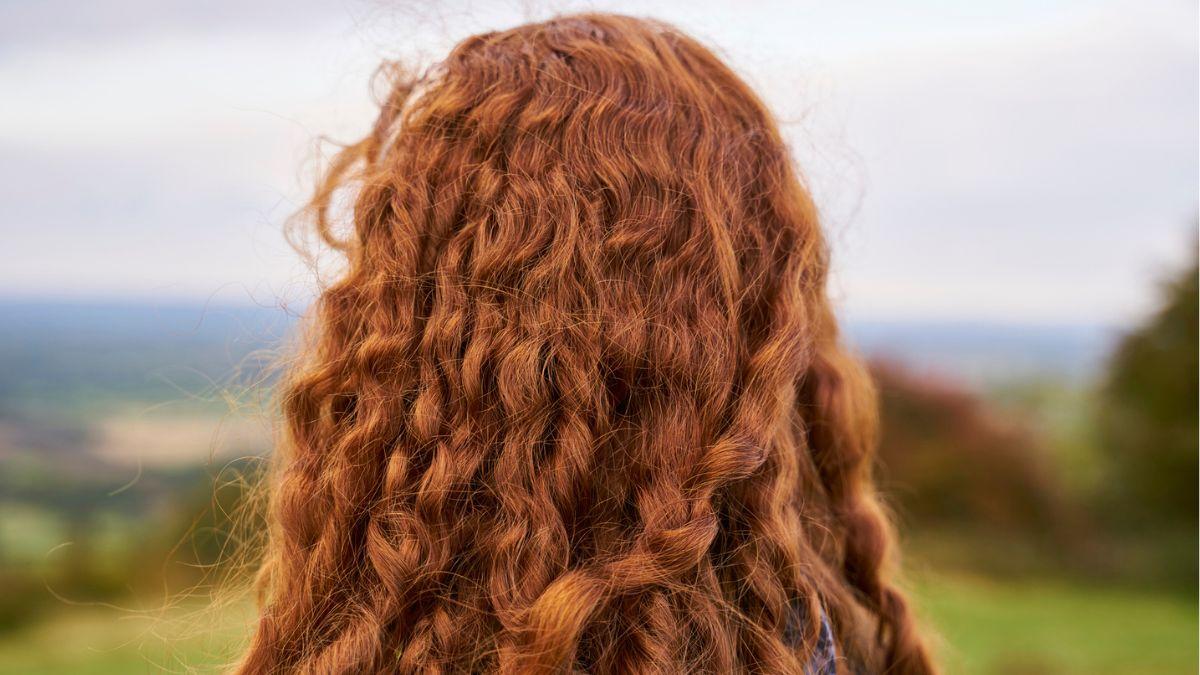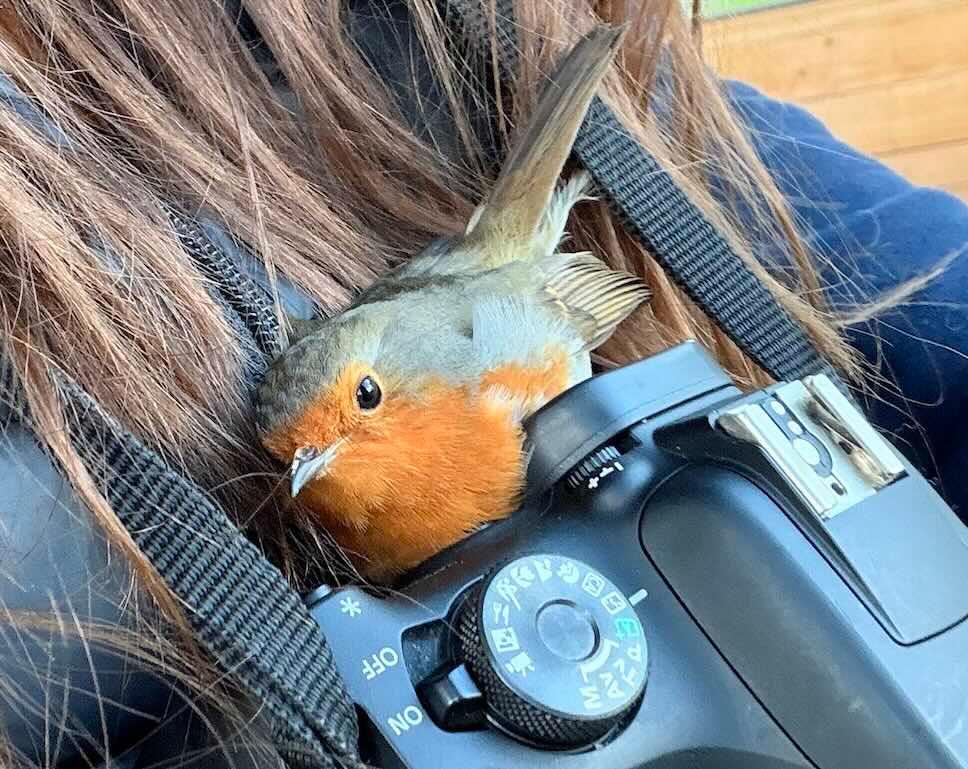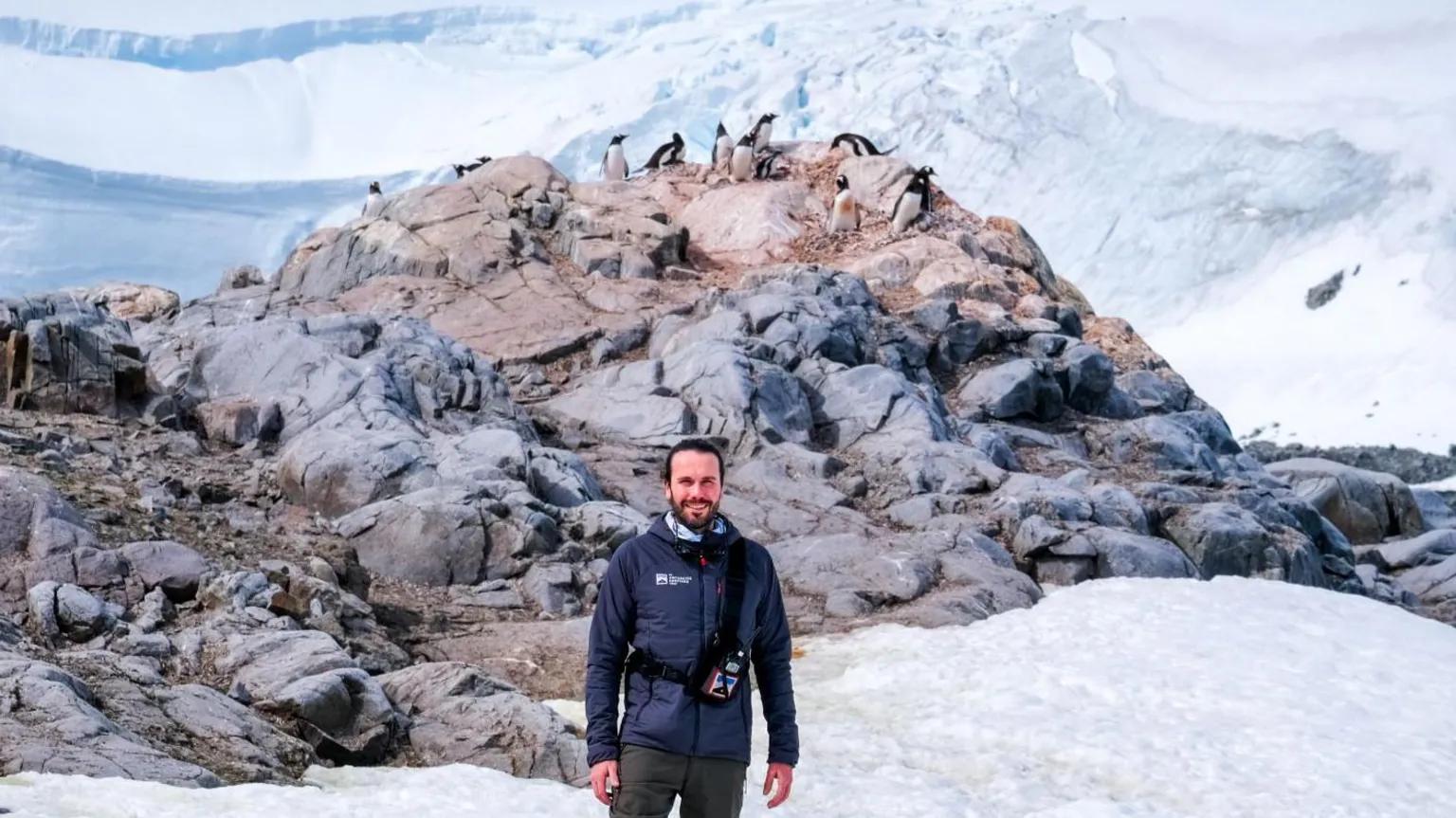Scroll For More

Score (98)
The birth of a spectacled bear brings joy to a farming community in Peru
In a heartwarming story from Peru, a spectacled bear cub was born in a rescue center built by a dedicated farming community. The adorable little bear, yet to be named, was discovered after park rangers noticed its mother, Lola, staying in her den. This is the second birth in the protected area where bears are cared for and not hunted. The community's efforts have created a safe haven for vulnerable species like the spectacled bear and white-winged guan.

Score (97)
Scientists Discover Red Hair Pigment's Secret Power Against Cellular Damage
Red hair may come with an unexpected biological perk — a built-in way to fight off cellular damage. A new study from Spain’s National Museum of Natural Sciences suggests that the pigment responsible for red hair, pheomelanin, could serve a protective role by helping cells dispose of excess cysteine, an amino acid that can cause oxidative stress when it builds up. The researchers used zebra finches as a model to explore how pheomelanin works. In their experiment, male birds that couldn’t produce the pigment showed more signs of oxidative damage when fed high-cysteine diets, compared to those that could make pheomelanin. Female finches, which don’t naturally produce the pigment, showed no major difference. The findings suggest that pheomelanin — a reddish-orange pigment also found in human hair, lips, nipples, and genitals — might not just be for show. It could help manage potentially harmful surpluses of cysteine from food or environmental sources by transforming it into pigment. In humans, genetic variants linked to red hair boost pheomelanin production. While that pigment has also been associated with a higher risk of melanoma, the study’s authors believe it may also be part of a complex system for maintaining cellular balance. “These findings represent the first experimental demonstration of a physiological role for pheomelanin,” the researchers wrote, adding that the results could deepen our understanding of both cancer risk and how pigmentation evolved in animals. The study was published in PNAS Nexus.

Score (97)
Scottish Students Recycle Over 20,000 Containers in Incentive Trial
Scottish students started recycling at dramatically higher rates when given the right incentive — and the results could help shape the future of recycling across the UK. A trial across three campuses of New College Lanarkshire saw students recycle more than 20,000 bottles and cans in a short period, thanks to the installation of reverse vending machines. The initiative was a partnership between the college, Keep Scotland Beautiful, and Coca-Cola Europacific Partners. The idea was simple: when students bought a bottled or canned drink, they paid a small deposit. That money was refunded once the container was returned to a reverse vending machine. The impact was immediate — 20,177 bottles and cans were recycled during the trial. In the same period the previous year, only 255 were collected. That’s an increase of over 7,900%. Once the trial ended, however, recycling rates dropped by 91%, highlighting how much behavior depends on incentives and ease of access. “This shows the real impact a deposit return scheme can have when people are given both a reason and a method to recycle,” said Barry Fisher, CEO of Keep Scotland Beautiful. “With two years until we see a U.K.-wide [deposit return scheme], it's vital that the public are aware of its introduction to ensure it is a success from the start.” The United Kingdom is preparing to roll out a national deposit return scheme in 2027, which will add refundable deposits to certain drink containers. Similar systems already exist in countries like Germany, Norway, and Australia, where reverse vending machines are widely used — and have even helped some individuals save enough for major life purchases. While Coca-Cola’s involvement in the trial lends weight to the project, the company continues to face criticism for its global plastic footprint. Despite making efforts to redesign packaging with less plastic and more recyclable materials, Coca-Cola still sells over 100 billion single-use plastic bottles each year and has frequently topped global rankings as the world’s worst plastic polluter. Still, the trial’s success sends a clear message: people are willing to recycle when it’s easy and rewarding. Whether the upcoming national rollout can replicate those results remains to be seen, but in Lanarkshire at least, the future looked refreshingly circular.

Score (65)
Why A 67-year-old "Ice Master" is Helping a New Hockey Arena in Italy Get Ready For the Olympics
Don Moffatt doesn’t seek the spotlight, but the ice has a way of dragging him into it. The 67-year-old Canadian, known around the world as an “ice master,” is in Milan preparing the rink for the 2026 Winter Olympics — his fifth Olympic Games, and by all accounts, his toughest yet. Construction delays at the Milano Santagiulia hockey arena meant Moffatt couldn’t start pouring ice until just before Christmas. While sparks from welding torches still flew above him, he began his work with less than three weeks to go before the first test games. In Olympic hockey terms, that’s dangerously tight. “Normally, we’d have months to test the ice,” Moffatt has said in past games. This time, he had days. Over the weekend, three Italian league games were played at the venue to simulate Olympic-level usage. The results were encouraging, if not perfect. A small hole that opened up in Friday’s opener quickly went viral, especially after it was patched using a green watering can — an unintentional star in the arena’s unfolding drama. The NHL, watching closely as it prepares to decide whether its players will return to Olympic competition for the first time since 2014, is expected to make that call Sunday. Andrea Francisi, the Milano Cortina chief games operations officer, was confident on Friday: “100 per cent,” he said, when asked if the world’s best players will be in Milan this February. But much of that confidence rests on Moffatt’s ice. And he knows it. A planned press conference with him was cancelled Saturday. Organizers instead issued a statement on his behalf: he was “happy and satisfied with the field of play,” and Friday’s hiccup was “a minor detail” and “in line with the usual process.” Moffatt has seen worse. His Olympic debut came in Torino in 2006, where just minutes before the opening faceoff, a crack split the rink all the way down to its foundation. He fixed it in time. He also built the ice in Vancouver, where Sidney Crosby scored his “golden goal” in 2010, and again in Beijing in 2022 — on a rink the same size as the one in Milan, despite early concerns that the current sheet was slightly too short. But the challenge in Milan isn’t just time or size. It’s dust. The arena is still under construction. Drywall needs sanding. Safety barriers aren’t fully installed. And construction dust settles where Moffatt needs perfection. The quality of Olympic ice can hinge on invisible variables — humidity, air temperature, water purity. Too many impurities and the surface gets cloudy. Not enough, and the water won’t bond properly. To Moffatt, ice isn’t just frozen water. It’s alive. “Elastic rather than static,” as Chris Jones put it while reporting from Milan. Moffatt treats it like a sentient thing — one that needs constant measurement, adjustment, and care. He walks the rink between every period, boots pressing against the surface, pushing gently at spots only he notices. He keeps a black book of numbers — a record of air pressures, temperatures, hardness — the quiet rituals of someone who sees the art in the science. At one point Saturday, Moffatt stood over a patch near Friday’s repair, staring into the ice like a fisherman watching his line in a still, frozen lake. His eyes narrowed. There are 25 days to go until Olympians hit the ice in Milan. The arena, rushed and raw, is still a work in progress. But if the surface reaches Moffatt’s standard, most people won’t think twice about it. And that’s how he prefers it. Back in Peterborough, Ontario, Moffatt learned to love ice while watching his dad flood their backyard rink. He saw his reflection in the thin layer of water, waiting for it to freeze. Now, half a world away, he’s chasing that same reflection — only this time, the stakes are higher. There’s still work to be done before the wonder.

Score (96)
This $9 Lollipop Plays Music in Your Mouth — and People Are Lining Up by the Millions
What if you could taste music? Thanks to a new tech-candy crossover, you kinda can. A new product called Lollipop Star is turning heads — and mouths — with a wild claim: it's a lollipop that plays music through your teeth. Using bone conduction technology, the sweet treat sends sound directly through your jawbone and into your inner ear, no headphones required. Described as a “concert in your mouth,” the tech-laced candy was unveiled at CES, the annual consumer tech showcase in Las Vegas. And yes, it’s real. "It’s not only a lollipop, it’s a carrier of the music,” said Sen Cai, chief marketing officer at Lava Brand Inc., the company behind the innovation. Each Lollipop Star is flavored, artist-branded, and single-use. Ice Spice gets a peach pop, Akon is blueberry, and Armani White is lime — with each featuring music and voice samples from the artist. The concept is simple: one end of the lollipop looks like a normal candy, but the stick includes a bulbous base with a button. When users bite down with their molars, subtle vibrations travel through the skull and play a song — a muted one, but enough to catch a beat. CNET reporter Abrar Al-Heeti tried it out and described the effect as “a wild sensation.” “I began to feel tiny vibrations and later heard music in my skull after biting down,” she wrote. “It’s a muted sound, and I had a hard time making out the lyrics in the busy halls of CES, but it’s a wild sensation... The lollipop is delicious — at least the peach one I had.” The novelty wasn’t lost on older attendees either. “Here I am, 66 years old, and enjoying something like this — it’s amazing,” Wesley Moore, a CES attendee from New Jersey, told Reuters. The tech works via bone conduction, a method that bypasses the eardrum entirely by sending sound directly to the cochlea. It’s used in some high-end headphones and hearing aids, but this might be the first time it’s been fused with candy. Priced at $8.99 each, Lollipop Star is not exactly your average gas-station sucker. And if you're thinking of trying one, you’ll need to get in line. Literally. Since CES, demand has exploded. According to Reuters, more than one million people have joined the waitlist for early access and limited edition pre-launch pops. Lava Brand hasn’t said when the product will be widely available, but the lollipops officially went on sale shortly after the trade show. Whether it's a novelty gift, an immersive concert snack, or just a clever use of old-school science and sugar, the Lollipop Star has found a sweet spot in a crowded tech world — and it’s just getting started.

Score (98)
Photographer Captures Heartwarming Moment As Bird Seeks Warmth In Her Embrace
A photographer in England got an unexpected companion during a recent wildlife outing — a tiny robin that decided to make her camera its perch and her head its home. Fay Wadsworth, 31, was visiting Yorkshire Wildlife Park in Doncaster last Monday when the encounter happened. She had been waiting patiently near the Amur leopard enclosure, hoping to photograph the park’s new cubs, when she suddenly heard a flutter of wings. “It was a little robin that sat on my camera… and it decided my hair was the perfect nestling spot,” Wadsworth said. At first, she thought the bird had accidentally flown into her and gotten tangled. “I freed his legs and opened out my hand, expecting him to fly away as quickly as he possibly could. But he didn’t; he stayed.” The robin, apparently more interested in companionship than food, nestled comfortably by her jacket, soaking in the warmth. Wadsworth said she consulted with wildlife rangers, who advised her to remain near the woodland area until the bird was ready to move on. Eventually, the robin flew into a nearby tree and began to sing. Wadsworth called the moment a blessing, adding, “I was blessed by this very friendly—and presumably cold—robin.” She later shared photos of the encounter online, where fellow nature lovers responded with their own stories of unexpected bird friendships. As one person put it, “Sometimes, the wildlife finds you.”

Score (93)
Ford CEO Honors Late Cousin Chris Farley While Helping Men Overcome Homelessness in Detroit
Jim Farley spends most of his time leading one of the world’s biggest automakers. But lately, he’s been just as focused on something else: helping Detroit’s homeless. Farley, the CEO of Ford Motor Co., has been quietly volunteering for decades at the Pope Francis Center, a facility in Detroit that supports men experiencing chronic homelessness. Since September 2024, he’s taken that commitment further, spending time at the center’s new Bridge Housing campus, a sprawling 60,000-square-foot facility that provides far more than just shelter. The center offers 40 studio apartments, meals, a library, a gym, barbershop, chapel, medical and dental clinics, legal services, and an art room. More importantly, it gives its residents time, support, and dignity. “It’s not just giving to them,” said Rev. Tim McCabe, the center’s CEO. “It’s holding them accountable and giving them agency and expecting them to succeed and telling them it’s possible.” For Allan Webster, one of the residents, it has meant a shot at turning his life around. An artist with a gift for building miniature models, Webster ended up living in his van after losing steady work as a painter. “I hit like a dead spot and I couldn’t find no more work,” he told Farley. “I couldn’t pay my rent and, boom, I was living in my van for two years.” That all changed when the Pope Francis Center approached him at the end of a 30-day Salvation Army program and offered him a place to stay. “It sounded too good to be true,” Webster said. “You’ve got your room, you’ve got your own TV, an art room, a library, you eat great here … washer and dryer and they’ll keep you here until you get a place of your own. They really help you out.” On a recent afternoon in December, Webster sat in the art room working on a new model when Farley dropped by. The two struck up a relaxed conversation, with Farley asking about Webster’s life, his family, his childhood without a father, and his dreams. “I used to tell (my mom) … I was going to stay sober and, boom, I would relapse,” Webster admitted. “So I gotta show her, actually show her that I’m doing better.” Farley listened intently. “I see. I see,” he said. “Addiction is a big part of all of our lives.” It’s also part of his own family’s story. Farley’s cousin was the late comedian Chris Farley, who died of a drug overdose in 1997. In honor of him, the Pope Francis Center named a room after Chris, where residents attend nightly AA and NA meetings and take life skills classes. “We thought having a room would be great because it’s a big problem that we have to unpack for people here,” Farley said. “It’s a big problem in a lot of families like our family and it’s a tragic thing.” Farley helped raise around $40 million to build the new campus and donated money himself, though he declined to say how much. His presence is low-key, not performative. On visits, he greets the 37 staff members and two dozen daily volunteers, banters with residents, and asks questions like any curious guest might. “You listen to music? I do, too,” he told Webster. “You just do your thing for hours and hours.” When Webster handed Farley a gift — a detailed model of a Ford Model T pickup truck that he built himself — Farley was visibly moved. “This is something I’ll treasure forever especially coming from you. Thank you so much,” he said, hugging Webster. “I love it. That’s fantastic.” The model had special meaning. Farley’s grandfather, Emmet Tracy, was an early Ford employee who helped build the original Model T. Farley plans to display the miniature truck in his new office at Ford’s world headquarters. He even asked Webster to visit and “run Ford” for 10 minutes. Webster laughed and said he’d want to see how cars are designed. “Don’t they start off with a big block of clay and sculpt it? That’s the part I would like.” “You should be a clay modeler for Ford,” Farley replied. “You’d like that job.” The casual conversation carried weight. It wasn’t about charity — it was about connection. As Webster explained his goal of becoming a house painter and learning to create faux marble effects on pillars, Farley encouraged him. “I have the same high expectations that your mom has of you,” he said. “I’m waiting to hear what happens.” Since opening, the Bridge Housing campus has already helped 13 men through its recovery and life skills programs, with more on the waiting list. McCabe says what makes the center different is the way it becomes a surrogate family for its residents. “What keeps us from falling into homelessness? We have a family net that keeps us safe,” he said. “These guys don’t have that, so we become family to them.” For Webster, that’s made all the difference. “I’ve never been to a place like this in my life,” he said. “It’s saved my life.”

Score (97)
Maryland Neighbors Rescue Mom and Two Children from Burning Home in Harrowing Early Morning Fire
A group of quick-thinking neighbors in Middle River, Maryland, came together in the early hours of Tuesday, Jan. 6, to save a mother and her two children from a house fire — an act of bravery captured on a doorbell camera across the street. The fire broke out just after 7 a.m. local time, according to the Baltimore County Fire Department (BCFD). By the time fire crews arrived on the scene at 7:12 a.m., the family had already been pulled to safety by neighbors. The mother and two children were treated for minor injuries and taken to a nearby hospital. Tragically, a dog found inside the home did not survive. The incident was recorded on a Ring camera belonging to neighbor Steven Angelini, who played a key role in the rescue. The footage, later shared by the fire department, shows flames shooting from a bay window as neighbors rush toward the burning house. In the video, people can be heard yelling for a ladder while smoke pours from an upstairs window. As the fire intensified, two children were dropped from a second-story window and caught by Angelini. A ladder was later used to help the mother escape. “This incident is a powerful reminder of the strength of our communities,” said Baltimore County Fire Chief Joseph Dixon in a statement. “Before our fire and EMS crews arrived, neighbors acted without hesitation to help a mother and her children escape a dangerous situation. I want to thank these residents for their courage and selflessness.” Dixon also praised fire crews for their quick work extinguishing the flames and providing medical support. The cause of the fire remains under investigation. Angelini, speaking to local news outlet WMAR 2, said he acted on instinct when he heard the screams. "My immediate reaction was I want to make sure that everyone's out of the house,” he said. “By the time I got to the middle of the street, I heard horror screams. It was haunting, it was scary, and I knew it wasn't good.” Although he had recently injured his arm and couldn’t lift a ladder himself, he knew time was running out. “My next option was, you know… they probably have, maybe a minute, seconds left to live, so I told the mother to drop the kids to me,” he recalled. Despite the heroic actions, Angelini downplayed his role. “I think God puts me in situations to help other people,” he said. “I did what I would want anyone else to do for my family.” In the aftermath, officials are using the incident to remind residents to check their smoke alarms and fire safety plans. For one Maryland neighborhood, a terrifying morning became a powerful example of community, courage, and compassion in action.

Score (97)
Volunteers Unite To Combat Coastal Erosion In Hawai'i With Native Plant Initiative
In a hands-on response to the growing threat of coastal erosion, about 40 volunteers gathered in Pāʻia, Hawai‘i, to plant more than 900 native plants along the shoreline. The effort is part of a larger, nature-based strategy to combat rising sea levels and build up natural barriers using species that have evolved to thrive in the islands’ fragile coastal ecosystems. According to Hawai‘i Public Radio, the community-led initiative included planting over 30 native species such as beach pea, oval-leaf clustervine, sea purslane, beach morning glory, and seashore dropseed. These plants play a critical role in stabilizing sandy shorelines by catching wind-blown sand and helping to build and reinforce dunes. As the dunes grow, they can act as buffers against encroaching tides and storm surges. “These native plants evolved to thrive in these conditions and can anchor soil that would otherwise be washed away,” organizers explained. The technique is cost-effective and relatively low-maintenance, requiring little irrigation or intervention once plants are established. The approach has been used in similar efforts globally—from helping farmers shield crops from erosion to Nicaraguan communities protecting freshwater sources. Hawai‘i faces particularly high stakes. A recent study revealed that one area of O‘ahu is sinking by 25 millimeters each year, compounding the risks posed by global sea-level rise. While the state has invested in improved sea-level monitoring systems, future adaptation efforts are uncertain amid looming federal budget cuts. The drivers of sea-level rise are largely tied to climate change. As greenhouse gas pollution traps more heat in the atmosphere, polar ice caps continue to melt at accelerated rates. The loss of reflective ice exposes darker land and water, which absorb more heat and worsen the cycle of thawing. While native plant restoration won’t stop global warming, it offers a fast and effective frontline defense. “Hosting a volunteer day increases community engagement, nourishes the relationship between people and the land, and reflects the county's strong commitment to sustainability,” said Patrick McCall, director of Parks and Recreation, via Hawai‘i Public Radio. Organizers hope the event does more than plant seeds in the ground—it plants a sense of stewardship among those who call the coast home.

Score (96)
Hidden for Decades, Steven Tyler’s Autograph Was Just Found Behind an Elevator Panel at a Halifax Arena
A piece of rock history was rediscovered in a freight elevator at Halifax’s Scotiabank Centre over the holidays — a pristine signature from Aerosmith frontman Steven Tyler, untouched and hidden behind a protective panel for nearly 30 years. The discovery came when maintenance workers were removing a bumper inside the well-used freight elevator, which has long served as the backstage gateway for touring acts and event staff. There, preserved in near-perfect condition, was Tyler’s autograph — a relic from Aerosmith’s Dec. 28, 1993 show at the then-named Halifax Metro Centre. “It’s funny to be star-struck from an autograph, but it is a really cool piece of rock history to have his autograph in our facility,” said Adria Young, spokesperson for Events East, the Crown corporation that operates the arena. The concert, part of Aerosmith’s Get a Grip tour, saw tickets go for $32.50. Official merch ran between $28 and $40, but the night gained some infamy thanks to bootleggers selling counterfeit T-shirts for as little as $10 inside the venue. After being kicked out by security, they reportedly continued selling outside to fans leaving the show. Three Montreal-area men were later fined in Halifax provincial court for copyright violations. One was even caught again two years later selling fake Bon Jovi shirts at another Halifax concert. As for the elevator, it turns out the tradition of signing the wall was a long-running one. “It just became sort of this funny little custom that people would do,” said Young. From the late 1980s onward, bands and performers would occasionally use the elevator to get from the loading bay to the stage. Over time, they’d leave their signatures on the walls — a mix of rock stars and arena staff alike. Longtime employees recall names like Axl Rose, Bryan Adams, and possibly even Neil Young, Billy Idol, and Alice Cooper. But most of those autographs are now gone. The wall was painted over in the late 1990s when it started looking too chaotic, cluttered with signatures from not just performers but maintenance workers, caterers, and security staff. Bumpers were added to protect the walls from further wear. Tyler’s autograph, however, survived — tucked away behind one of those protective panels. It hadn’t been seen in about 20 years until maintenance crews stumbled upon it again. The find sparked buzz inside the building. Word spread by internal email, and some staff even took pictures with the newly revealed signature before it was once again hidden from view. “It’s an incredible memento and reminder of Scotiabank Centre’s legacy as the home of sports and entertainment in the Atlantic region for almost 50 years,” said Young. “And we can imagine there are similar treasures hidden throughout the facility from artists and athletes and figures over the last 50 years, so we hope to uncover more of those in time.” For now, fans hoping to catch a glimpse will be disappointed. With maintenance work complete, the panel was put back in place and the autograph is once again out of sight — a secret piece of Halifax’s rock-and-roll history, tucked back into the walls where it waited for decades.

Score (95)
Why This Researcher Spent Christmas Counting Penguins in Antarctica
While most people were unwrapping presents on Christmas morning, Pete Watson was counting penguin chicks. The 41-year-old from Caister-on-Sea, Norfolk, is spending three months living among more than 1,000 gentoo penguins on Goudier Island in Antarctica — one of the most remote places on Earth. Watson is stationed at Port Lockroy, a football-pitch-sized outpost on the Antarctic Peninsula. He’s there on behalf of the UK Antarctic Heritage Trust as part of a three-year conservation effort to help protect Base A — a British heritage site — from the growing impacts of climate change. “Even though some days can be quite tough and quite challenging, you only have to step outside or look outside the window to just remember how fortunate we are,” said Watson. He’s working as a penguin monitor, collecting detailed population data over the austral summer. “I'm particularly interested in the number of nests, the number of eggs, then eventually the number of chicks and the number of chicks that make it through to maturity,” he said. The information Watson is collecting will be fed into a broader study by the British Antarctic Survey, which tracks wildlife trends and climate shifts across the continent. While gentoo penguins are not considered endangered — with an estimated 774,000 individuals in the wild — Watson says monitoring their population is still essential. “Even though the species in itself isn't in decline, it's still important for this kind of data to be collected,” he said. Gentoos are the third-largest species of penguin, after emperor and king penguins. They are fast swimmers, reaching underwater speeds of up to 35 kilometres per hour, and are known to mate with the same partner year after year. They typically live up to 20 years in the wild. Despite the charm of daily life with the penguins, Watson says living on Port Lockroy “doesn’t come without its challenges.” There’s no running water or showers, and the team is experiencing 24 hours of daylight during the southern summer. “Life is pretty basic here,” he said, “but at the same time, it is utterly charming.” This is Watson’s first time living in Antarctica for an extended period and his first experience as a penguin monitor. He has a background in expedition travel writing and had visited the continent once before. In addition to conservation work, the team is also carrying out vital repairs to Base A — Britain’s first permanent research station in Antarctica. Now more than 80 years old, the structure houses the world’s southernmost post office and museum. The UK Antarctic Heritage Trust says the base is facing increasing deterioration from age, weather, and environmental wear. As Watson spends his days monitoring penguin populations and restoring a piece of polar history, he’s keenly aware of what’s at stake. “This region of the world is one of the fastest warming places on the planet,” he said. His work, done in the quiet company of seabirds and ice, is part of a much larger effort to understand what happens next.